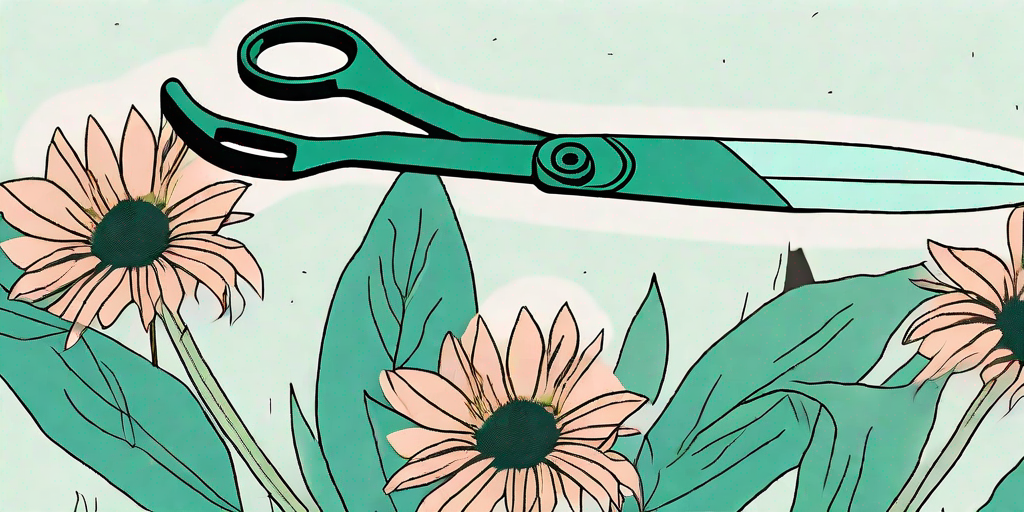
If you've ever looked at your once vibrant coneflowers, only to find them wilting and drooping, you're not alone. But don't despair, dear gardener, because we're about to embark on a journey to revive your coneflowers and keep them blooming all season long. And how do we do that? By deadheading, of course! But what is deadheading, you ask? Well, buckle up, because you're about to become a coneflower-saving superhero.
Understanding Deadheading
Deadheading sounds a bit ominous, doesn't it? But fear not, it's not as grim as it sounds. Deadheading is simply the process of removing faded or dead flowers from plants. This encourages the plant to focus its energy on producing more blooms, rather than wasting it on seeds. It's like telling your coneflowers, "Hey, don't worry about those old flowers. You've got better things to do. Like making more flowers!"
Deadheading is especially beneficial for coneflowers, also known as Echinacea, as it encourages a longer blooming period. So, if you're a fan of these vibrant, daisy-like flowers, deadheading is your ticket to a garden full of them all summer long.
The Science Behind Deadheading
Now, let's get a bit nerdy. When you deadhead a flower, you're essentially tricking the plant into thinking it hasn't fulfilled its purpose of producing seeds. This prompts the plant to produce more flowers in an attempt to reproduce. It's a clever little gardening hack that Mother Nature doesn't seem to mind.
Furthermore, deadheading prevents your coneflowers from self-seeding, which can lead to an overcrowded garden. Unless you're aiming for a coneflower jungle, it's best to keep their proliferation in check.
How to Deadhead Coneflowers
Now that you're well-versed in the why, let's move onto the how. Deadheading coneflowers is a simple process that requires minimal tools and a bit of patience. But don't worry, it's not rocket science. If you can make a cup of tea, you can deadhead a coneflower.
So, without further ado, here's your step-by-step guide to deadheading coneflowers:
- Wait for the right time: The best time to deadhead coneflowers is when their petals have started to wilt and the center of the flower has turned brown.
- Get your tools: All you need is a pair of sharp, clean pruning shears or scissors.
- Locate the stem: Follow the stem of the wilting flower down to the first set of healthy leaves.
- Make the cut: Cut the stem just above these leaves, at a 45-degree angle.
- Repeat: Continue this process for all wilting or faded flowers on the plant.
And voila! You've just deadheaded your first coneflower. Give yourself a pat on the back, you gardening guru, you.
Common Mistakes to Avoid
While deadheading is a relatively simple process, there are a few common mistakes that can hinder your coneflowers' growth. But don't worry, we're here to help you avoid these gardening faux pas.
Cutting Too Low
Cutting the stem too low can damage the plant and hinder its ability to produce new blooms. Remember, you want to cut just above the first set of healthy leaves. If you're unsure, it's better to cut higher rather than lower. Your coneflowers will thank you.
Using Dull Tools
Using dull or dirty tools can damage the plant and introduce diseases. Always use sharp, clean tools when deadheading. Your coneflowers deserve the best, after all.
FAQs
Still got questions? Don't worry, we've got answers. Here are some frequently asked questions about deadheading coneflowers:
- When is the best time to deadhead coneflowers? The best time to deadhead coneflowers is when their petals have started to wilt and the center of the flower has turned brown.
- Can I deadhead coneflowers in the fall? Yes, you can deadhead coneflowers in the fall to prepare them for winter. However, some gardeners prefer to leave the seed heads on the plant to provide food for birds during the colder months.
- Do I need to deadhead coneflowers? While it's not necessary to deadhead coneflowers, doing so can encourage a longer blooming period and prevent the plant from self-seeding.
Conclusion
And there you have it, folks! You're now a certified coneflower-saving superhero. With your newfound deadheading skills, you can keep your coneflowers blooming all season long. So, go forth and deadhead, dear gardener. Your coneflowers are counting on you.
Remember, gardening is a journey, not a destination. So, take your time, enjoy the process, and don't be afraid to get your hands dirty. After all, a little dirt never hurt anyone. Happy gardening!















